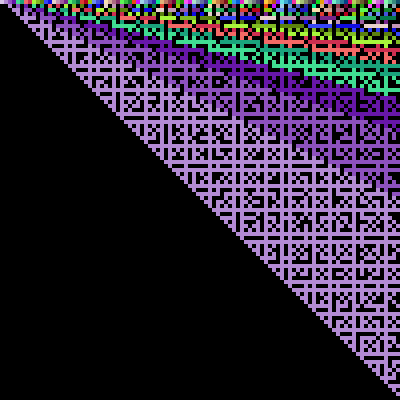Battlestation Operational
Time Limit: 6000/3000 MS (Java/Others) Memory Limit: 65536/65536 K (Java/Others)
Total Submission(s): 752 Accepted Submission(s): 420
Problem Description
> The Death Star, known officially as the DS-1 Orbital Battle Station, also known as the Death Star I, the First Death Star, Project Stardust internally, and simply the Ultimate Weapon in early development stages, was a moon-sized, deep-space mobile battle station constructed by the Galactic Empire. Designed to fire a single planet-destroying superlaser powered by massive kyber crystals, it was the pet project of the Emperor, Darth Vader, and its eventual commander Grand Moff Wilhuff Tarkin to expound the military philosophy of the aptly named Tarkin Doctrine.
>
> — Wookieepedia
In the story of the Rogue One, the rebels risked their lives stolen the construction plan of the Death Star before it can cause catastrophic damage to the rebel base. According to the documents, the main weapon of the Death Star, the Superlaser, emits asymmetric energy in the battlefield that cause photons to annihilate and burns everything in a single shot.
You are assigned the task to estimate the damage of one shot of the Superlaser.
Assuming that the battlefield is an n×n grid. The energy field ignited by the Superlaser is asymmetric over the grid. For the cell at i-th row and j-th column, ⌈i/j⌉ units of damage will be caused. Furthermore, due to the quantum effects, the energies in a cell cancel out if gcd(i,j)≠1 or i<j.
The figure below illustrates the damage caused to each cell for n=100. A cell in black indicates that this cell will not be damaged due to the quantum effects. Otherwise, different colors denote different units of damages.

Your should calculate the total damage to the battlefield. Formally, you should compute
f(n)=∑i=1n∑j=1i⌈ij⌉[(i,j)=1],
where [(i,j)=1] evaluates to be 1 if gcd(i,j)=1, otherwise 0.
Input
There are multiple test cases.
Each line of the input, there is an integer n (1≤n≤106), as described in the problem.
There are up to 104 test cases.
Output
For each test case, output one integer in one line denoting the total damage of the Superlaser, f(n) mod 109+7.
Sample Input
1 2 3 10
Sample Output
1 3 8 110
Source
2017 Multi-University Training Contest - Team 8
Recommend
liuyiding | We have carefully selected several similar problems for you: 6447 6446 6445 6444 6443
#pragma comment(linker, "/STACK:102400000,102400000")
#include<bits/stdc++.h>
using namespace std;
#define debug puts("YES");
#define rep(x,y,z) for(int (x)=(y);(x)<(z);(x)++)
#define lrt int l,int r,int rt
#define lson l,mid,rt<<1
#define rson mid+1,r,rt<<1|1
#define ll long long
const int maxn =1e6+5;
const int mod=1e9+7;
ll gcd(ll x,ll y) { return y==0?x:gcd(y,x%y); }
///正因子个数函数(不是质因子)
int prim[maxn],cnt=0;
int miu[maxn],phi[maxn];
bool vis[maxn];
int g[maxn];
ll f[maxn],sum[maxn];
/*
题目大意:求公式
可以说是蛮难的一道莫比乌斯题目了,
参杂着一些常用的数论公式转换和套路。
首先函数明显是个前缀和的形式,
那么单独求一项f(i),
....具体的求法参考大佬的博客吧,我手打公式不会。
https://blog.youkuaiyun.com/consciousman/article/details/77888386
*/
void sieve()
{
miu[1]=phi[1]=sum[1]=1;
memset(vis,false,sizeof(vis));
for(int i=2;i<maxn;i++)
{
if(!vis[i])
{
prim[cnt++]=i;miu[i]=-1;
g[i]=1;///初始化
phi[i]=i-1;sum[i]=2;
}
for(int j=0;j<cnt;j++)
{
int k=i*prim[j];
if(k>=maxn) break;
vis[k]=true;
if(i%prim[j]==0)
{
g[k]=g[i]+1;sum[k]=sum[i]+sum[i]/g[k];
phi[k]=phi[i]*prim[j];
break;///注意这里的莫比乌斯函数是零
}
g[k]=1;sum[k]=sum[i]<<1;
miu[k]=-miu[i];phi[k]=phi[i]*(prim[j]-1);
}
}
for(int i=2;i<maxn;i++) sum[i]+=sum[i-1];
for(int i=1;i<maxn;i++)
for(int j=i,k=1;j<maxn;j+=i,k++)
{
(f[j]+=miu[k]*sum[i])%=mod;
if(f[j]<0) f[j]=(f[j]+mod)%mod;
}
for(int i=1;i<maxn;i++) f[i]=(f[i]+phi[i]-1+f[i-1])%mod;
}
int main()
{
sieve();
int n;
while(scanf("%d",&n)!=EOF) printf("%lld\n",f[n]);
return 0;
}







 本文介绍了一个基于《星球大战》中Death Star超级激光武器的能量计算问题。该问题要求估算超级激光在一个n×n战场网格上造成的总伤害。通过数学分析与算法优化,实现了高效的计算方案。
本文介绍了一个基于《星球大战》中Death Star超级激光武器的能量计算问题。该问题要求估算超级激光在一个n×n战场网格上造成的总伤害。通过数学分析与算法优化,实现了高效的计算方案。
















 703
703

 被折叠的 条评论
为什么被折叠?
被折叠的 条评论
为什么被折叠?








